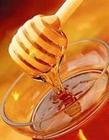
The study, which suggested glucose intake triggers appetite regulation in the brain in a way that fructose does not, generated a critical response from the Corn Refiners Association.
The C.R.A. noted that the study involved 20 people “who were fed massive doses of sugars in a manner that people do not consume in real life.”
“Effects of fructose versus glucose on regional cerebral blood flow in brain regions involved with appetite and reward pathways” was published by a team including Kathleen A. Page, an assistant professor of clinical medicine at the University of Southern California.
The researchers subjected volunteers to two magnetic imaging sessions at Yale University in conjunction with fructose or glucose drink ingestion in a blinded, random study.
The researchers were looking for changes in the hypothalamic regional cerebral blood flow “to explore correlations between the hypothalamus and other brain region responses, and hormone responses to fructose and glucose ingestion.”
The researchers’ findings suggested that glucose, but not fructose, has the ability to reduce blood flow in areas of the brain that regulate appetite, helping curb the desire to eat more.
James Rippe, a consultant of the C.R.A. and a professor at the University of Central Florida, said it is important that studies focusing on obesity and food consumption mirror real world experiences.
“By failing to do so, we really gain very little practical insight,” Dr. Rippe said.
In particular, Dr. Rippe was critical of the consumption of fructose and glucose in isolation, the quantities consumed and the fact subjects fasted before ingesting the sugar.
“When consumed together, as they almost always are, fructose and glucose balance each other out and would likely have no effect on normal hypothalamic blood flow,” he said.
In an editorial accompanying the study, writers for JAMA described the research as a proof-of-concept study, which they said involves using “experimental conditions that provide maximal contrast between the intervention and control conditions so as to increase the likelihood of finding differences.”
The editorial said additional studies are needed to “refine the experimental conditions to detect more subtle differences.”
Cane and beet sugar as well as high-fructose corn syrup contain a mixture of glucose and fructose.





